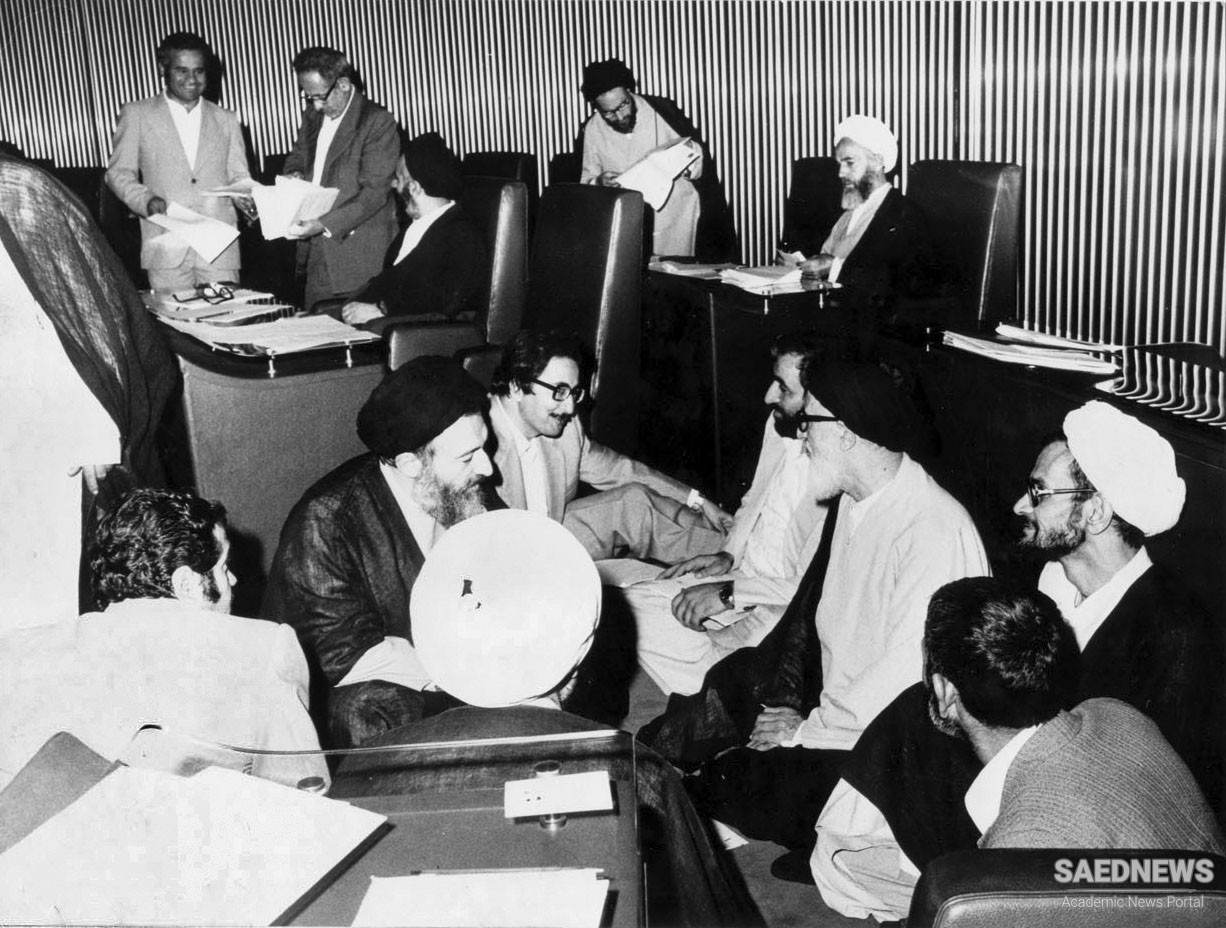Bazargan showed his disloyalty to the Islamic movement as early as March when the country prepared to vote either yes or no in a referendum on instituting an Islamic Republic. Bazargan wanted to give the public the third choice of a Democratic Islamic Republic. Imam Khomeini refused with the argument:“What the nation needs is an Islamic Republic – not a Democratic Republic nor a Democratic Islamic Republic. Don’t use the Western term ‘democratic.’ Those who call for such a thing don’t know anything about Islam.” He later added: “Islam does not need adjectives such as democratic. Precisely because Islam is everything, it means everything. It is sad for us to add another word near the word Islam, which is perfect.” The referendum, held on April 1, produced 99 percent yes votes for the Islamic Republic. Twenty million – out of an electorate of twenty-one million – participated. This laid the ground for elections to a 73-man constituent body with the newly coined name of Majles-e Khebregan (Assembly of Experts) – a term with religious connotations. In August, the country held elections for these delegates. All candidates were closely vetted by the Central Komiteh, the Central Mosque Office, and the newly formed Society for the Militant Clergy of Tehran (Jam’eh-e Rouhaniyan-e Mobarez-e Tehran). The elections produced landslide victories for Imam Khomeini’s disciples. The winners included fifteen ayatollahs, forty hojjat al-islams, and eleven laymen closely associated with Imam Khomeini. The Assembly of Experts set to work drafting the Islamic Constitution. The document contained 175 clauses – 40 amendments were added upon Khomeini’s death. The document was to remain in force until the return of the Twelfth Shia Imam Mahdi. The preamble affirmed faith in God, Divine Justice, the Koran, Judgment Day, the Prophet Muhammad, the Twelve Imams, the return of the Occulted Imam Mahdi, and, most pertinent of all, Imam Khomeini’s concept of velayat-e faqeh. It reaffirmed opposition to all forms of authoritarianism, colonialism, and imperialism. The introductory clauses bestowed on Imam Khomeini such titles as Supreme Faqeh, Supreme Leader, Guide of the Revolution, Founder of the Islamic Republic, Inspirer of the Miserable, and, most potent of all, Imam of the Muslim Umma – Shi’is had never before bestowed on a living person this sacred title with its connotations of Infallibility. Khomeini was declared Supreme Leader for life. It was stipulated that upon his death the Assembly of Experts could either replace him with one paramount religious figure, or, if no such person emerged, with a Council of Leadership formed of three or five faqehs. It was also stipulated that they could dismiss them if they were deemed incapable of carrying out their duties. The constitution retained the national tricolor, henceforth incorporating the inscription “God is Great.”


 Islamic Revolution: Towards an Understanding of Roots and Causes
Islamic Revolution: Towards an Understanding of Roots and Causes














































